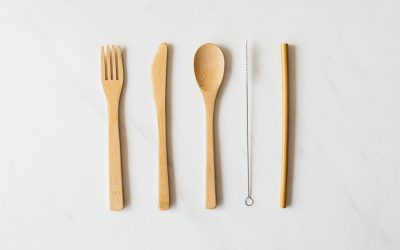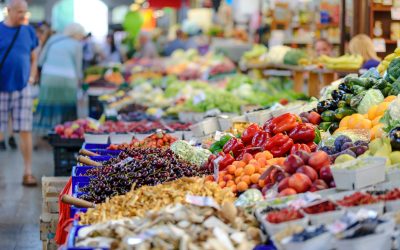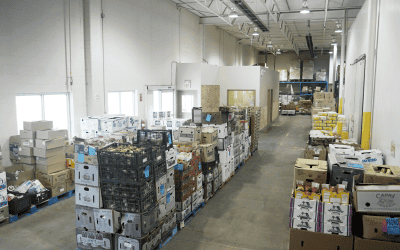A big part of running a kitchen is managing food and food waste. Chefs have to meal plan, do kitchen audits, make grocery lists, use what they have, and buy just the right amount of food so that there is little waste. This is good kitchen management 101. Reducing your kitchen food waste saves the planet and the budget. At home, we’re all chefs in our own kitchens.
Our home is also where we have the most control over our individual impact on the planet. As experts in ways to reduce our food waste, Second Harvest has written a lot on the subject. Here is a roundup of our top 10 kitchen food waste tips so that we can all be more sustainable chefs, grocery shoppers, and consumers at home.
Top 10 Kitchen Food Waste Tips for Chefs at Home
1. Get to Know Your Best Before Dates
“The first thing that you need to know is that best before dates are about quality, not safety. It quite literally means that the food was best, or in its finest form, before said date. After that date means that it’s beginning its slow decline in quality.”
—Excerpt from our blog post, BEST BEFORE DATES: Everything You Need to Know
When packaged correctly and stored or frozen at the correct temperature, the following best before date timelines are generally true:
- Canned goods: Last up to one year past the best before date
- Dairy (and eggs): Lasts up to two weeks past the best before date
- Poultry pieces: Last up to six months in the freezer
- Meats (incl. beef, lamb, pork and whole poultry): Last up to one year in the freezer
- Dry cereals: Last up to one year past the best before date
- Packaged snacks (incl. popcorn, granola bars and bagged snacks): Last up to one year past the best before date
- Prepared and frozen meals: Last up to one year past the best before date in the freezer
- Unopened, shelf-stable condiments: Last up to one year past the best before date
- Unopened drinks (incl. juice or coconut water): Last up to one year past the best before date
Read more about best before dates here.
2. Check Your Fridge and Cupboards Often
“It’s easy to push our canned goods, sauces, spices, jarred jams, chutneys and pickles, teas, soups, grains, flours and cereals to the back of our cupboards and forget about them until they’re ancient and ready for the landfill. It takes work and conscious effort to do the opposite—and avoid the cost (to our wallets but, more significantly, the planet) of unnecessary food waste.”
—Excerpt from our blog post, Art of the Pantry: Finding New Inspiration in Your Cupboards
Like any restaurant chef will tell you, a big part of managing a kitchen is knowing what needs to be eaten and when. Do a quick inventory of your cupboards, freezer, pantry, and fridge. What’s the point in buying farm-fresh strawberries if half of them rot in your fridge? Use your senses and eat your way through your kitchen! Better yet, clean out your freezer and stay on top of what’s in there.
Read more on how to get re-inspired by your pantry.
3. Find Recipe Inspiration
“Eating the items at the back of your cabinet or freezer shouldn’t be a chore, so don’t make it one. Find a great recipe (foodgawker is an excellent resource) and make a plan to celebrate the ingredients.”
—Excerpt on finding recipe inspiration from our blog post, 7 SIMPLE STEPS to Sustainable Grocery Shopping and Eating Habits
Part of reducing your kitchen food waste is getting creative with recipes that include ingredients that need to be eaten. For instance, if you have meat in your freezer and know that it should be eaten, take it out to unthaw, and spend a few minutes researching recipes that get you inspired.
4. Meal Plan Based on What you Have
When chefs do kitchen audits, they write down what they have that needs to be eaten, brainstorm recipes that could feature those ingredients, and make a meal plan from there. At home, consider doing the same thing. For instance, if you have canned corn, tomatoes, and beans in your pantry, you could make a hearty soup or tacos or burritos, depending on what inspires you (and your appetite).
“Depending on how many meals you plan to make at home per day and per week, make a little grid of breakfast, lunch and dinner for the week. Add in the recipes that feature foods that need to get eaten first and fill out your meal plan from there. Don’t forget that some meals could be made from leftovers and spruced up with a delicious salad, vegetables or soup.”
—Excerpt on how to make a meal plan from our blog post, 7 SIMPLE STEPS to Sustainable Grocery Shopping and Eating Habits
5. Shop Only for What you Need
Knowing what you already have and what you need to buy more of can make a huge impact on reducing your kitchen food waste. That way you don’t get to the grocery store and impulse buy items that you already have, which can trigger unnecessary waste. For instance, if you run out of olive oil or vinegar, take note of it somewhere. A running “grocery list” in your phone’s note section is helpful—then tick off items once you buy them.
6. Know Where and How to Store Your Produce
“How you store your fruits, vegetables, bread, canned goods, and condiments greatly impacts their shelf-life—and your household food waste.”
—Excerpt from our blog post, WASTE REDUCTION WEEK: Curb Your Household Food Waste
Some Did-You-Knows About How to Store Food at Home:
- Some fruits like apples, bananas, tomatoes, and avocados give off ethylene which speeds up the ripening and spoilage of other produce. Store them in sealed bags.
- Store anything that will wilt (root vegetables, greens, peppers, cucumbers and so on) in high humidity drawers. Tip: some fridges will have an image of vegetables on this drawer.
- Keep fruits and citruses in low humidity drawers to avoid rot or mould. Tip: some fridges will have an image of fruits on the low-humidity drawer.
- Store potatoes, sweet potatoes, garlic, and onions in cool, dry, dark cupboards, not the fridge. Tip: keep potatoes and onions apart from each other.
Learn more about properly storing fruits and vegetables at home.
7. Spend Time Cooking at Home
“Give yourself the space and time to cook. Figure out what you need to make the experience enjoyable and make it happen. This may be finding inspiration in cookbooks, recipes online or watching how-to videos—or it could be decluttering your kitchen or just scheduling enough time after work to cook.”
—Excerpt from our blog post, What Modern Eating Habits Can Learn From Past Generations
It takes time, work, effort, and love to prepare a meal from scratch. But the benefits are endless. The meal is often more nutritious, healthy, and delicious, plus it reminds us to value our ingredients and food. Making our own meals forces us to understand how our food got to our plates. Hopefully, all of this helps us to think twice about food waste.
8. Save Your Kitchen Leftovers
“Find ways to spruce [your leftovers] up. For example, if you’ve made pasta, consider eating it two days from now (so that you didn’t just have it—boring!) and make a side salad or saute vegetables to make it different. If you know that you’re not going to eat the leftovers immediately, freeze them instead.”
—Excerpt from our blog post, What Modern Eating Habits Can Learn From Past Generations
Once you’ve put time, effort, and money into doing a kitchen audit, meal planning, grocery shopping, and preparing a meal, the last thing you’re going to want to do is waste your leftovers. Save them for lunch another day and beef them up with other ingredients that need to be eaten.
9. Re-Use and Compost Your Kitchen Food Waste
“Let’s think about creative kitchen hacks to reduce the food waste that we’ve become so accustomed to in our homes. Let’s challenge ourselves to reduce our food waste in our home kitchens—and see how this seemingly small step can make a big impact on a daily basis.”
—Excerpt from 10 Clever & Easy Kitchen Hacks to Reduce Your Home’s Food Waste
Some food waste is unavoidable, like carrot tops, onion skins, bones, and so on. Some other kitchen food waste is avoidable, like tossing wilted produce, ugly vegetables, or blemished fruit. It’s up to us chefs at home to get creative with what we do with all of our food waste. For instance, all of the unavoidable food waste mentioned above could make delicious soup stock and then go into the compost, rather than the landfill. Likewise, blemished, ugly, or wilted produce is still edible and nutritious—we just have to get a bit more creative with how we prepare it.
10. Support Local Food Waste Rescue and Reduction Causes
Communities across Canada are doing inspirational work to reduce, rescue, and redistribute food waste. Take the City of Toronto, for instance. The City of Toronto’s Waste Reduction Community Grants program awarded Second Harvest a grant in 2021 to support our innovative food rescue and reduction efforts. Using this funding award, Second Harvest developed and delivered a training program to help people learn how to reduce waste in their homes.
With this grant award, Second Harvest designed a food waste reduction workshop and conducted 10 training sessions that were attended by 241 people living in Toronto. We developed a “train-the-trainer” guide for teachers, mentors, and anyone who trains others on how to reduce waste. This launched alongside a workshop that had over 100 people join in. Second Harvest also conducted in-depth food waste audits that measured waste volumes in five Toronto-based community groups to help them reduce their waste—and spending and impact as a result.
Second Harvest is grateful to the City of Toronto for providing this grant that helped us share our knowledge and best practices with others.
Learn more about the importance of reducing our food waste. Together, we’ve got this!





